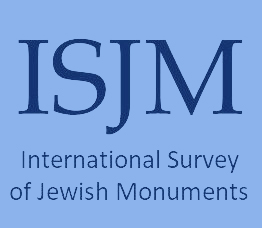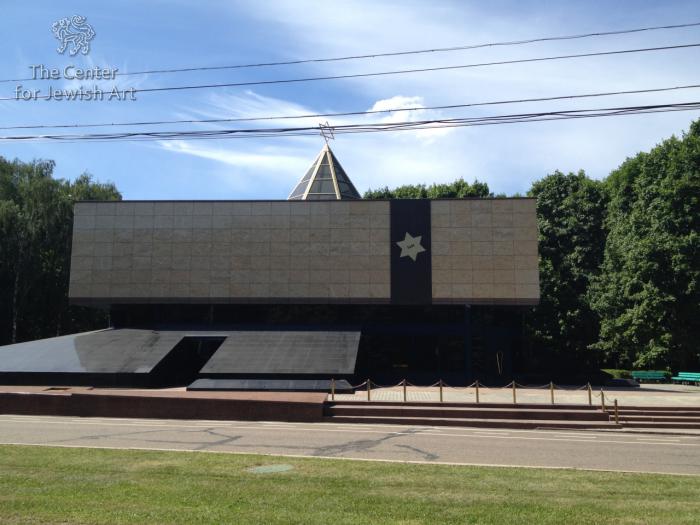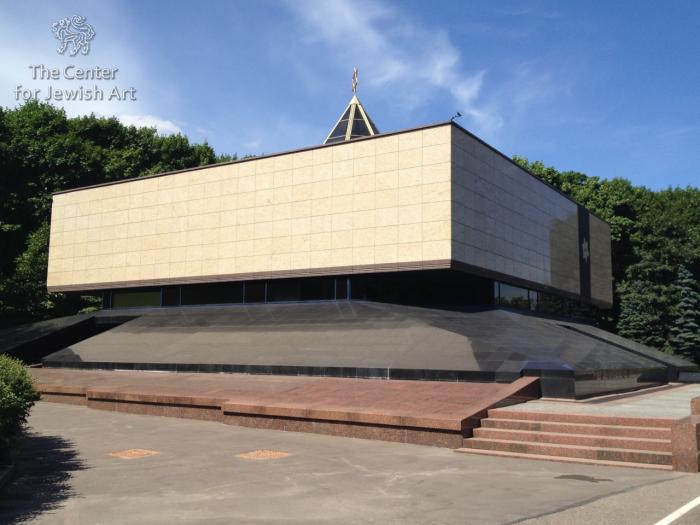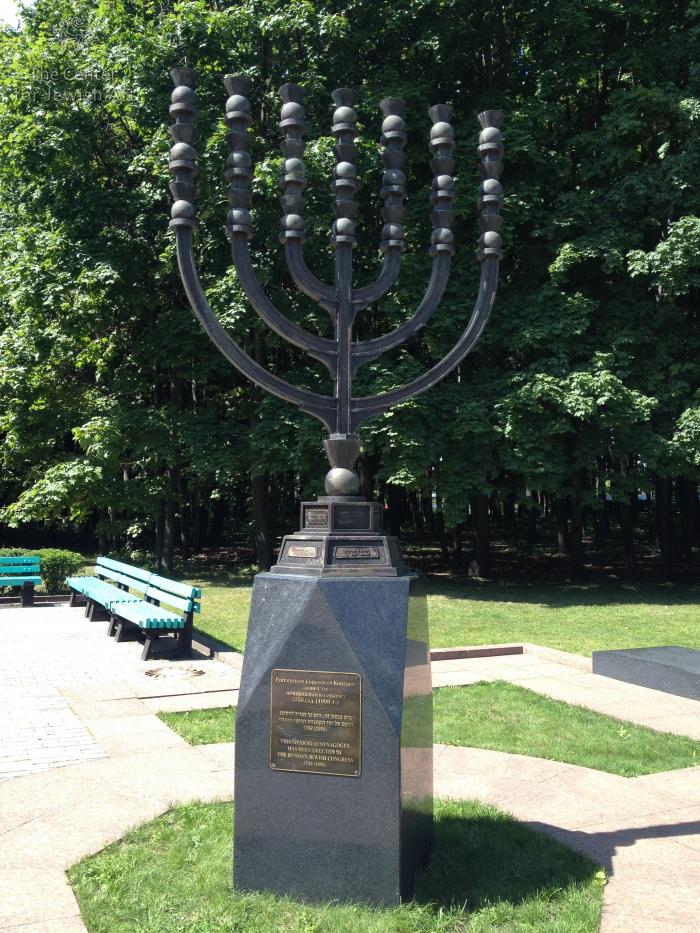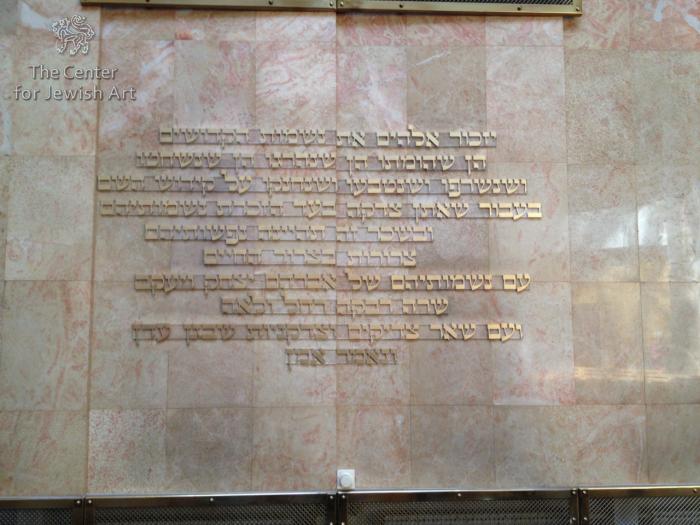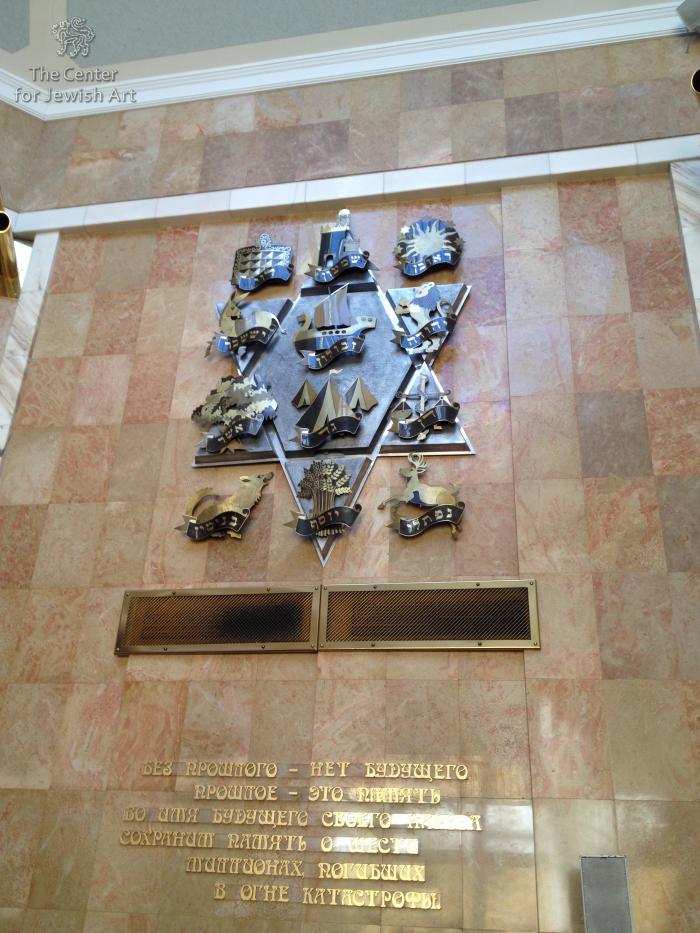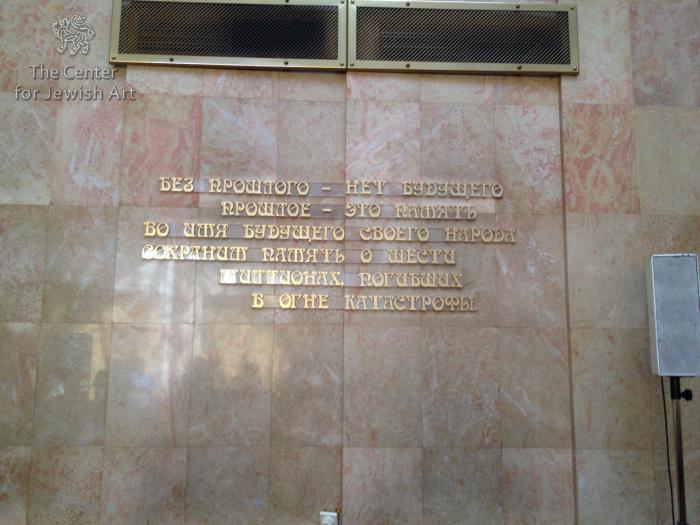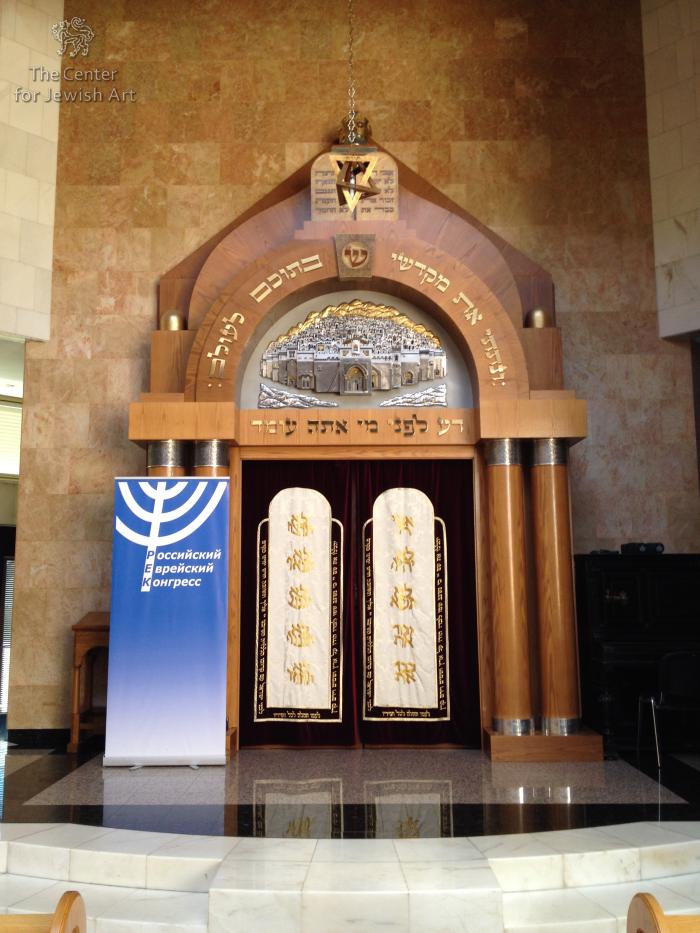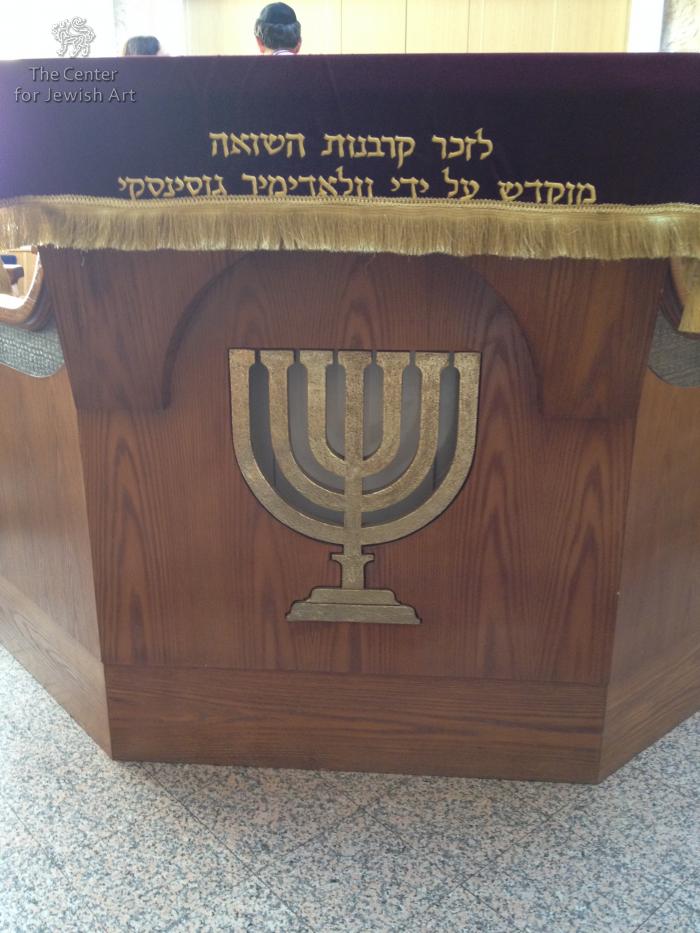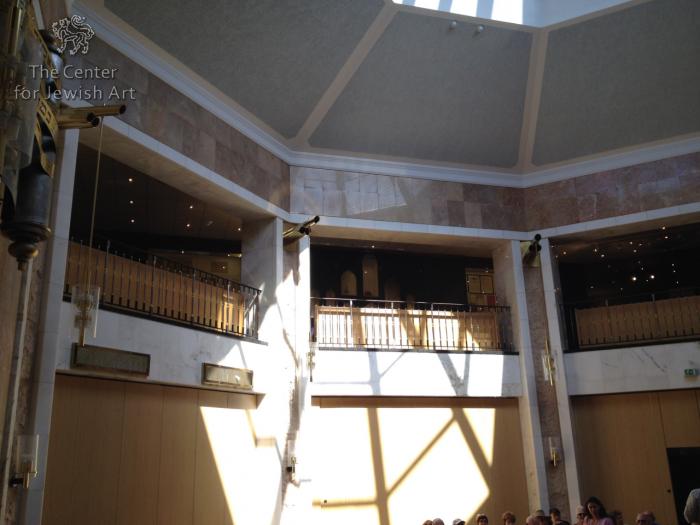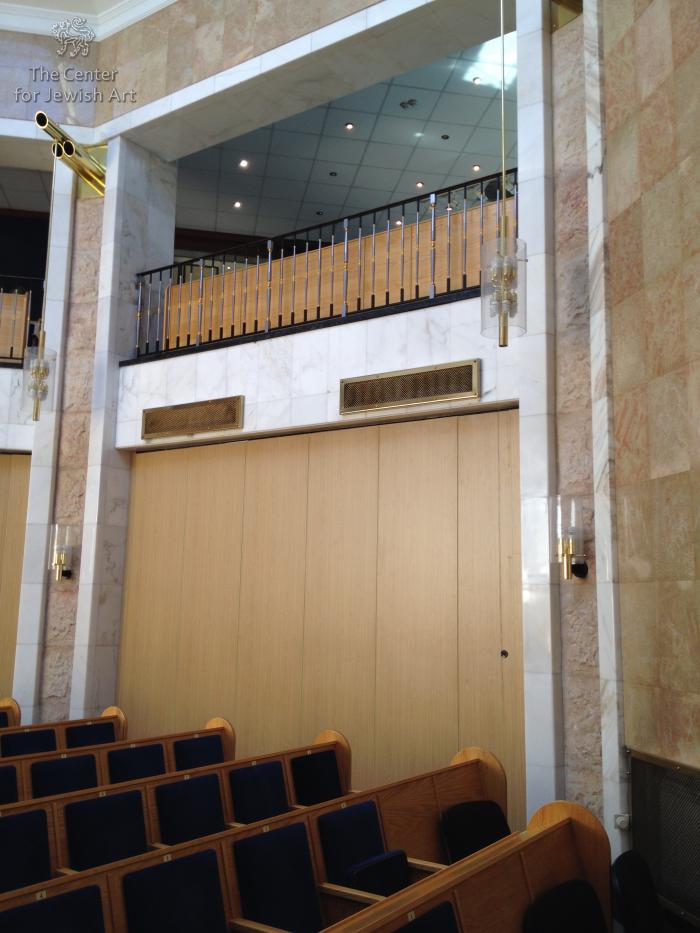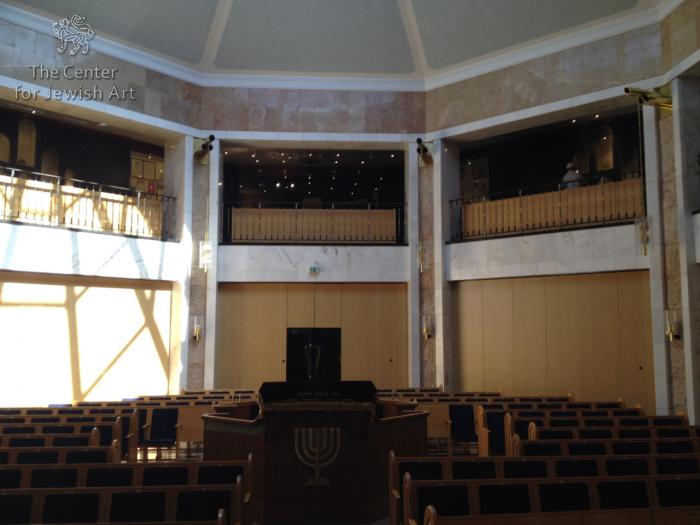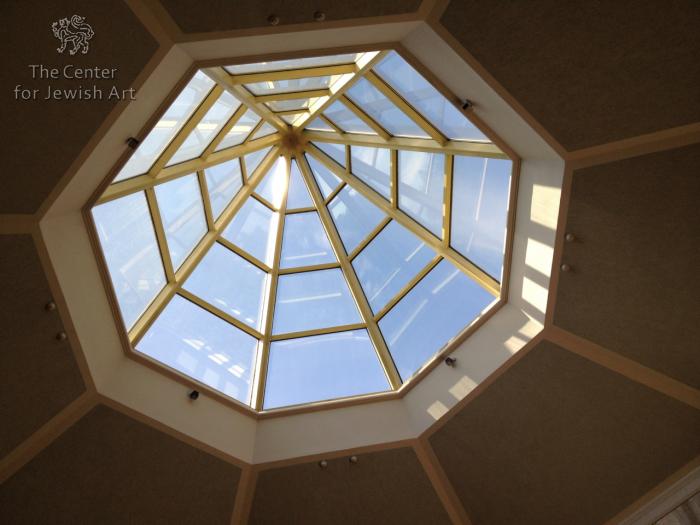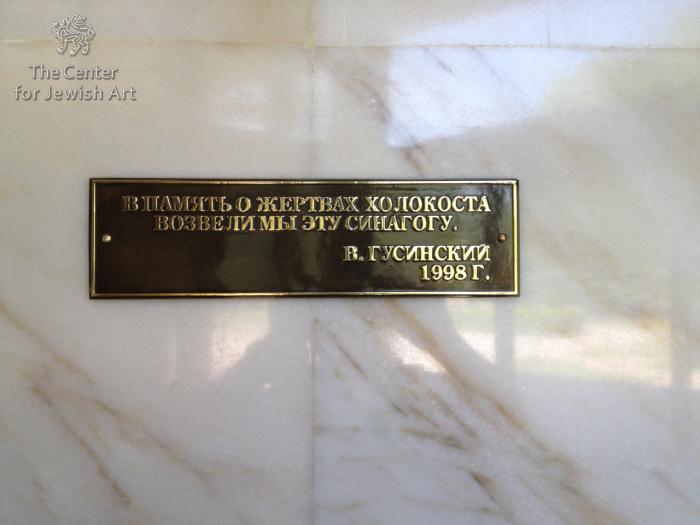Obj. ID: 21925 Holocaust Memorial Synagogue in Moscow, Russia, 1998

Memorial name
Мемориальная синагога (Memorial Synagogue)
Who is Commemorated?
Jewish victims of Holocaust
Description
The building has three stories. The prayer hall is located in the middle story. The museum occupies the basement and the upper part of the building. The exhibition in the upper part is devoted to Jewish life in the Russian Empire and USSR; the exhibition in the basement is larger and concentrates on the war and Holocaust.
The construction was made possible through a donation by Vladimir Gusinsky and his name is mentioned several times in the inscriptions.
Inscription
In the vestibule the inscription in Russian reads:
В память о жертвах Холокостах
возвели мы эту синагогу
В.Гусинский
1998 г.
Translation: In the memory of Holocaust victims/ we erected this synagogue./V. Gusinsky/1998
In the prayer hall to the left from the Ark, under the tribes of Israel the inscription in Russian reads:
Без прошлого - нет будущего
Прошлое - это память
Во имя будущего своего народа
Сохраним память о шести
Миллионах погибших
в огне Катастрофы.
Translation: Without the past, there is no future/ The past is the memory/For the sake of the future of our people/let us keep the memory about six/ millions of perished/ in the flames of the Holocaust.
To the right from the Ark, under the Torah scroll, the inscription in Hebrew cites the memorial prayer Hazkarat Neshamot and reads:
יזכור אלוהים את נשמות הקדושים
הן שהומתו הן שנהרגו הן שנשחטו
ושנשרפו ושנטבעו ושנחנקו על קידוש השם
בעבור שאתן צדקה בעד הזכרת נשמותיהם
ובשכר זה תהיינו נפשותיהם
צרורות בצרור החיים
עם נשמותיהם של אברהם יצחק ויעקב
שרה רבקה רחל ולאה
ועם שאר צדיקים וצדיקות שבגן עדן
ונאמר אמן
Translation:
May God remember souls of the holy, / that were killed and murdered, and butchered, / and burnt and drown and strangled for the sanctification of name / for I will give charity for remembrance of their names / and for this retribution may their souls / be bound in the bundle of life / with the souls of Abraham, Isaac, and Jacob, / Sarah, Rebecca, Rachel, Leah, / and with other [male and female] righteous who are in Paradise / and let us say amen.
The Bimah cover has inscriptions in Russian and Hebrew.
In Russian
Всем жертвам Катастрофы посвящается
Владиммром Гусинским
In English translation:
Translation: Devoted to all the victims of the Shoah / by Vladimir Gusinsky
In Hebrew:
זכר קורבנות השואה
מוקדש על יד וולאדימיר גוסינסקי
Translation: To the memory of the Shoah victims / Devoted by Vladimir Gusinsky
Commissioned by
Russian Jewish Congress (https://www.rjc.ru/)
The memorial synagogue is a part of the WWII memorial on the Poklonnaya Gora. This memorial to the Great Patriotic War of 1941-1945 (the closest term in English is the Eastern Front of World War II) is one of the most important Moscow war memorials.
The history of the memorial started in 1958 when a stone was laid on the spot. The development of the memorial was entrusted to Evgeny Vuchetich, the author of the famous memorial in Treptow Park, Berlin. Construction was delayed by protractions, and no ideas of Vuchetich or any other artists, who submitted their projects to architectural contests of 1975 and 1986 were realized. In 1961, a park was laid on the hill.
The memorial as we know it today was conceived in 1992 by the mayor of Moscow Yury Luzhkov. The architect Zurav Zaritelli suggested erecting a Christian Orthodox chapel, a synagogue, and a mosque along with a military memorial. The memorial was unveiled on the 50th anniversary of the victory, May 9, 1995.
Currently, the memorial includes:
- a 141.8-high Victory Obelisk, erected in 1995
- the Central Museum of the Great Patriotic War of 1941-45, 1995
- the Church of St. George,1995
- Memorial Mosque, 1997
- Monument "To the Defenders of the Russian land", 1997
- Sculptural group "The Tragedy of the People" in memory of the Holocaust victims, 1997
- Memorial Synagogue and the Holocaust Memorial Museum, 1998
- Memorial "To the Spaniards Fallen in the Great Patriotic War of 1941-45," 2001
and several other memorials as well as exhibitions demonstrating weapons and military equipment. The memorial is constantly expanding and the city authorities add new memorials devoted to WWI, the Soviet-Afghan war, etc.
In general, the memorial is built in such a way that the motives of glory are emphasized, while the motives of grief are underplayed. The mosque and the synagogue are not very well seen in the complex, while the obelisk, the museum, and the church are very dominant and immediately recognized by a visitor.
The synagogue and the museum were established by the Russian Jewish Congress (REK) with the support of the city authorities and financed by the oligarch Vladimir Gusinsky, the Head of REK at that moment. The cornerstone of the synagogues was laid on October 8, 1996. Initially, there was no intention to incorporate a Holocaust museum in the building. The decision was taken at a late stage of the construction. The synagogue was designed by the Israeli architect Moshe Zarchi and Russian architect Vladimir Budaiev (who took part in designing the Victory Obelisk together with Zurab Tsaritelli), the interior was decorated by the Israeli sculptor Frank Meisler.
The exhibition of the Holocaust museum was developed
https://jewishmagazine.ru/articles/intervyu/ilja-altman-esli-data-vhodit-v-evrejskij-kalendar-evrei-ob-jetom-budut-pomnit-vsegda/
The museum halls occupy the basement and the upper part of the building. The exhibition in the upper part is devoted to Jewish life in the Russian Empire and USSR. The exhibition in the basement is larger and concentrates on the war and Holocaust.
The opening ceremony on September 2, 1998, was attended by the Russian president Boris Yeltsin and the mayor of Moscow Yurii Luzhkov, who presented the synagogue with a Torah scroll. REK interpreted the construction "as a landmark event in the history of new democratic Russia".
Mochalova, Victoria. "Jewish Museums in Moscow," in Antony Polonsky, Hanna Węgrzynek and Andrzej Żbikowski, eds. New Directions in the History of the Jews in the Polish Lands (Boston: Academic Studies Press, 2018), 150-169, 151-155., https://doi.org/10.1515/9788394914912-020 (accessed December 15, 2021)
Polukhina Elizaveta and Alexandrina Vanke. "Social Practices of Using War Memorials in Russia: A Comparison between Mamayev Kurgan in Volgograd and Poklonnaya Gora in Moscow," Russian Sociological Review 14(4) (2015): 115-128., https://doi.org/10.17323/1728-192X-2015-4-115-128 (accessed December 16, 2021)
Van’ke, Aleksandrina. “Ladshafty pamiati. Park pobedy na Poklonnoi gore v Moskve.” Neprikosnovennyi zapas 101 (3) (2015)., https://www.nlobooks.ru/magazines/neprikosnovennyy_zapas/101_nz_3_2015/article/11518/ (accessed December 19, 2021)



